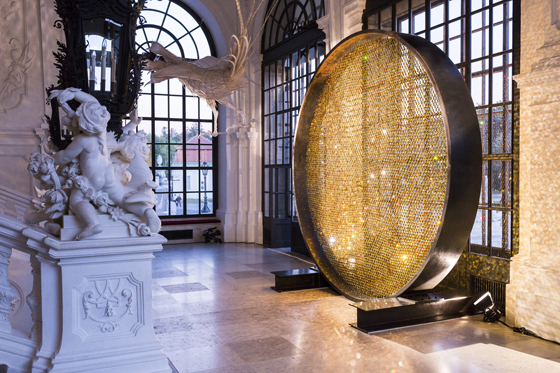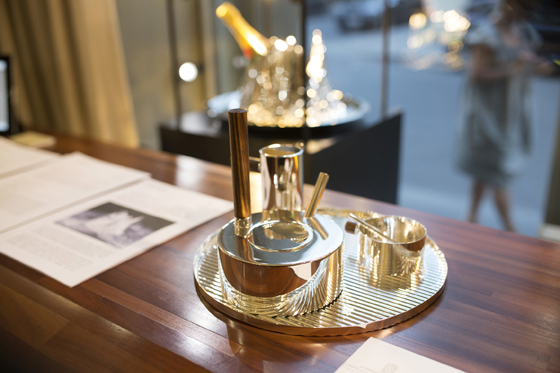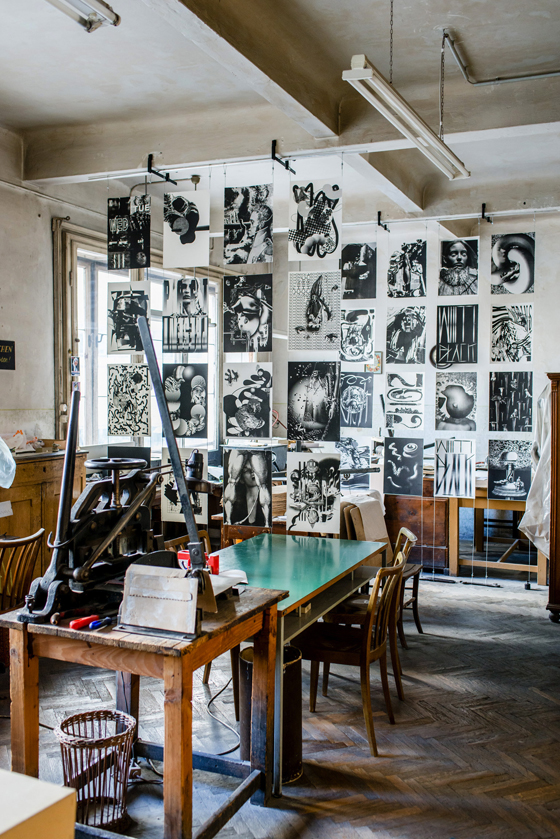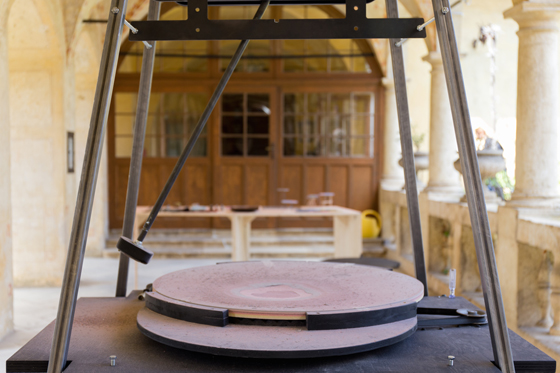The Empire Strikes Back: Vienna Design Week
Text by Simon Keane-Cowell
Zürich, Switzerland
02.11.16
It's ten years since Vienna Design Week was launched and the city-wide creative showcase shows no sign of losing its lustre.
The city as showroom: Vienna Design Week's tenth edition continued to adhere to the founding principle of being 'a culture festival, not a fair'; photo: Kollektiv Fischka
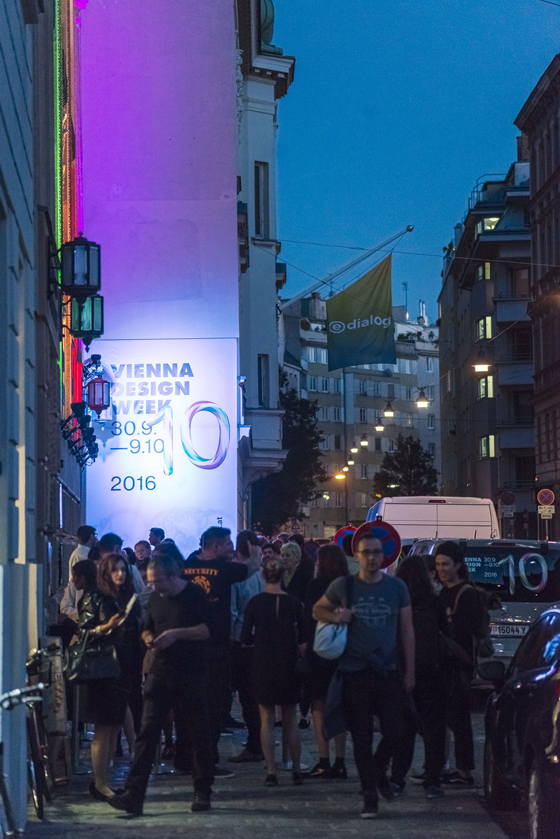
The city as showroom: Vienna Design Week's tenth edition continued to adhere to the founding principle of being 'a culture festival, not a fair'; photo: Kollektiv Fischka
×Austria’s empire might be long gone, but its former imperial might is still writ large in its capital's grandiose imperial architecture. In the contemporary, global scheme of things, of course, Vienna isn’t that big. And certainly for the author of this piece, who made an almost direct passage at the end of September from the London Design Festival to Vienna Design Week, there was less ground to cover in the city of coffee houses and prancing horses than on the island.
In the eye of the beholder: Fredrikson Stallard's giant-lens-like Prologue installation at the Belvedere Place, comprising over 8,000 Swarovski crystals; photos: Swarovski_Thomas Schrott
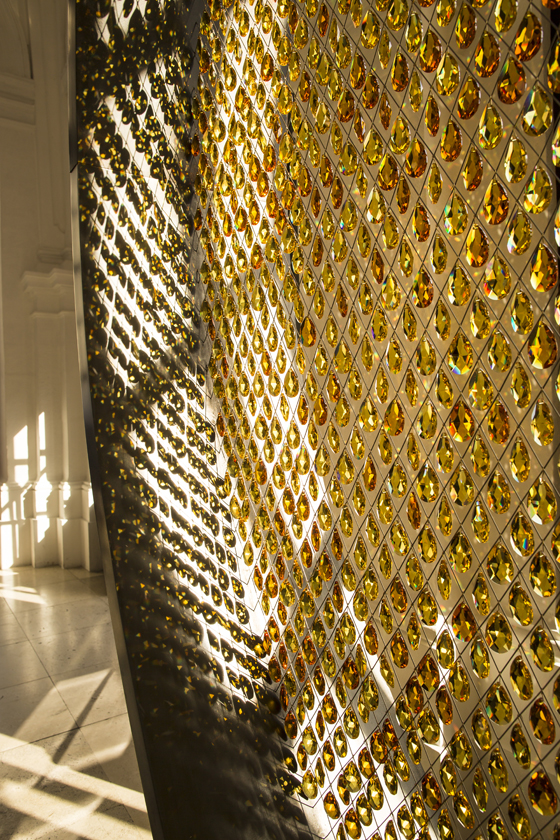
In the eye of the beholder: Fredrikson Stallard's giant-lens-like Prologue installation at the Belvedere Place, comprising over 8,000 Swarovski crystals; photos: Swarovski_Thomas Schrott
×That said, it’s highly fertile ground, where unbridled (no pun intended) creativity meets a virtuosity of craftsmanship. And size isn’t everything, as they are wont to say. It may operate on a limited budget, but VDW as design showcase punches well above its weight.
Bright lights, big city: Maxim Velčovský’s City Shades dioramas of architecturally landmarked cityscapes, created by backlighting J & L Lobmeyr-made chandelier parts and glassware; photo: Kollektiv Fischka
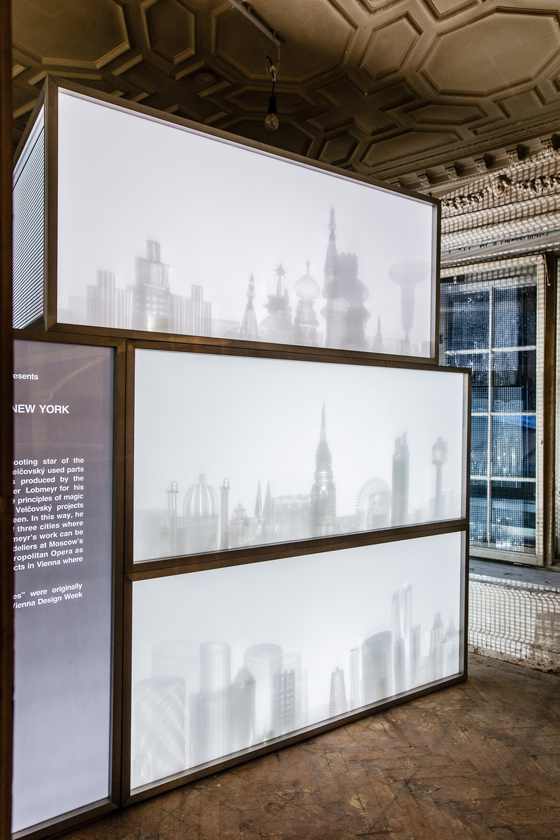
Bright lights, big city: Maxim Velčovský’s City Shades dioramas of architecturally landmarked cityscapes, created by backlighting J & L Lobmeyr-made chandelier parts and glassware; photo: Kollektiv Fischka
×Macro/Micro
A particular conceptual strand of this year’s tenth-anniversary edition of VDW was that of scale and the relation between the individual element and the whole. Just as the festival’s showrooms and other exhibition sites located throughout the city (its so-called Passionswege) together formed a design topography to be encountered either by plan or chance, so Czech artist Maxim Velčovský’s City Shades installation at the VDW Festivalzentrale cleverly applied the technique of shadow theatre to compositions of differently sized and formed chandelier parts and drinking glasses to create intriguing dioramas of Vienna, Moscow and New York’s cityscapes. Backlit, the J & L Lobmeyr-made glass elements cast shadows that represented, at turns, a number of the city’s iconic architectural landmarks, including the Stephansdom and its giant ferris wheel.
Size matters: Friedrich Kiesler's 1925 City of Space, installed at Vienna's MAK (top), and David Tavcar’s collaboration with petit-point craft-manufacturer Maria Stransky, Zoom-In Zoom-Out (above); photos: Kollektiv Fischka
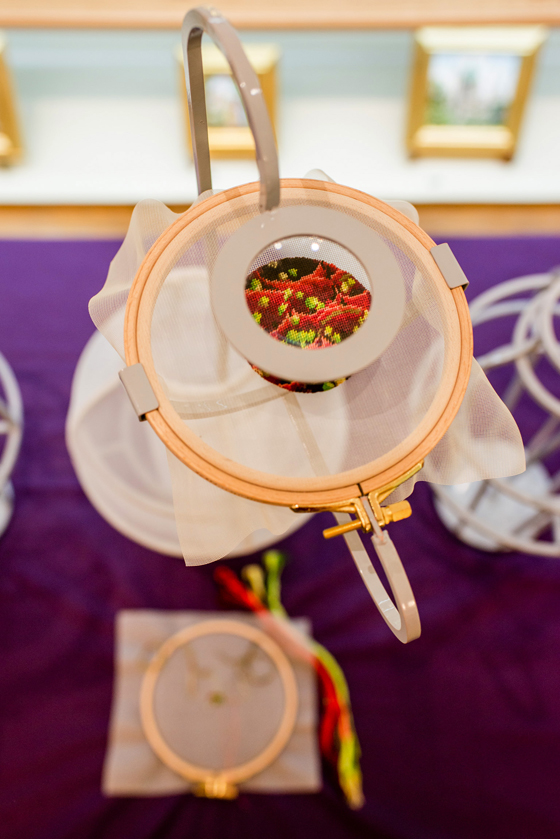
Size matters: Friedrich Kiesler's 1925 City of Space, installed at Vienna's MAK (top), and David Tavcar’s collaboration with petit-point craft-manufacturer Maria Stransky, Zoom-In Zoom-Out (above); photos: Kollektiv Fischka
×British design duo Fredrikson Stallard, meanwhile, collaborated with Swarovski to create a striking, four-metre-high installation in the midst of the Belvedere Palace’s baroque splendour. Entitled Prologue, the site-specific piece, comprising over 8,000 gold- and topaz-coloured crystals, took the form of a large, lens-like structure, which communicated the idea of the pleasure of the gaze as much as its individual, shimmering elements invited optical feasting.
Actual lenses were deployed as part of Slovenian designer David Tavcar’s collaboration with petit-point craft-manufacturer Maria Stransky in their small workshop in the city. Drawing on the handicraft skills of the in-house embroiderers, whose work can contain up to 2,500 stitches per inch, Tavar showed his ‘zoomed-in’ reworking of classic Stransky motifs, such as roses and violets, under a series of magnifying glasses – turning the figurative and classical into the abstract and contemporary.
A star is born: Hans Harald Rath's stellar chandeliers installed at J & L Lobmeyr, 50 years after their debut at New York's Metropolitan Opera; photo: Kollektiv Fischka
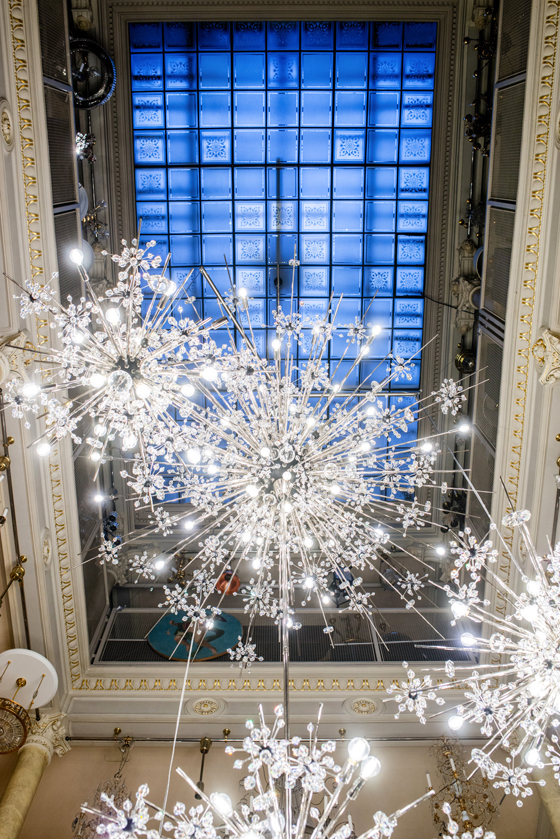
A star is born: Hans Harald Rath's stellar chandeliers installed at J & L Lobmeyr, 50 years after their debut at New York's Metropolitan Opera; photo: Kollektiv Fischka
×Tafelspitz
Vienna’s cultural assets aren’t limited to the exuberance of its architecture or its tradition of craftsmanship in furniture. It’s also present in bourgeois rituals of the everyday. Eating and drinking in the Austrian capital have traditionally been taken very seriously and the material culture around such activities has, over centuries, testified to this. Think silver tableware and porcelain.
À table!: Tomás Alonso's rational, yet expressive, Tea Service, shown at Wiener Silber Manufactur (top; photo: Kollektiv Fischka), and zerunianandweisz’s Fremdes Vogel collection of subversive table settings (above; photo: zerunianandweisz)
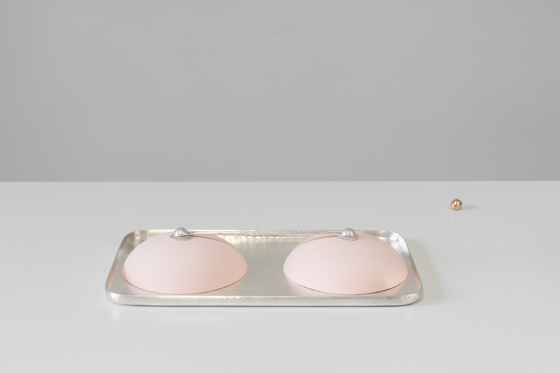
À table!: Tomás Alonso's rational, yet expressive, Tea Service, shown at Wiener Silber Manufactur (top; photo: Kollektiv Fischka), and zerunianandweisz’s Fremdes Vogel collection of subversive table settings (above; photo: zerunianandweisz)
×With its subtly subversive and often very humorous table-set compositions, made up of labour-intensive, hand-worked elements and objets trouvés, Austrian design duo zerunianandweisz’s Fremdes Vogel collection, shown at the Festivalzentrale, was developed together with Roma craftspeople in a Transylvanian coppersmith’s and came with tongue firmly placed in cheek. On the same festival site, in an installation reminiscent of the classic tea salon, Vienna-based studio Polka curated the new gastro porcelain collection they have designed for tea purveyors Demmers Teehaus. Various tea-service elements were brought together to form a tiered composition, its form referencing that staple object type of bourgeois conviviality – the cake stand.
Tea, big-style: Polka's tea-room installation, with their porcelain collection designed for tea purveyors Demmers Teehaus; photo: Kollektiv Fischka
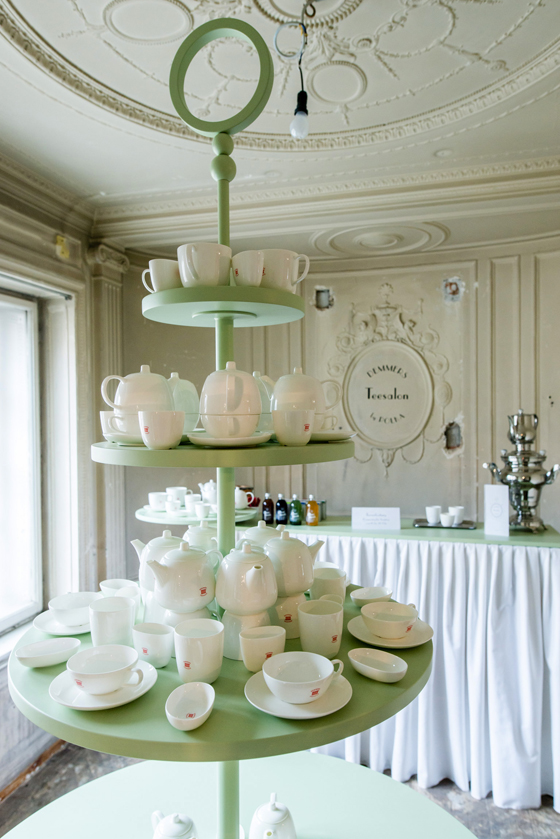
Tea, big-style: Polka's tea-room installation, with their porcelain collection designed for tea purveyors Demmers Teehaus; photo: Kollektiv Fischka
×In its city showroom, meanwhile, Wiener Silber Manufactur exhibited highlights from the past ten years of Passionswege, including its beautifully rational, yet highly expressive, Tea Service by Spanish-born, London-based Tomás Alonso. Also on show was its ice-sheathed champagne bucket by French designer Alexandre Echasseriau, which in turn makes reference to the jagged form of glaciers and mountains.
Ways of seeing: Studio Es's collaboration with the Artistic Institute for Copperplate Printing (top; photo: Kollektiv Fischka), and a special show at Neue Wiener Werkstätte's exhibition space based on their award (above; photo: NWW)
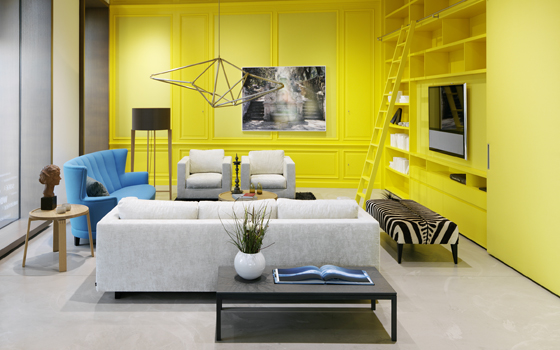
Ways of seeing: Studio Es's collaboration with the Artistic Institute for Copperplate Printing (top; photo: Kollektiv Fischka), and a special show at Neue Wiener Werkstätte's exhibition space based on their award (above; photo: NWW)
×Traces
You can’t move in Vienna without tripping over the rich creativity and craft artistry of its development. The various historical layers of the city’s architectural and material-cultural heritage – among them the Baroque, Jugendstil and Modernist – underpin it and define it. Traces of the past surface in the present, for example its old shop signage, still perceptible amidst the visual noise of international consumer brands.
The first cut is the deepest: Martino Gamper turns the familiar object type that is the glass tumbler into something more poetic by means of cutting, engraving and hand-painting; photo: Kollektiv Fischka

The first cut is the deepest: Martino Gamper turns the familiar object type that is the glass tumbler into something more poetic by means of cutting, engraving and hand-painting; photo: Kollektiv Fischka
×A number of VDW’s exhibitors played with the notion of traces, too. London-based designer Martino Gamper’s prototype collection of glasses for former glassware and chandelier purveyor to the royal court J & L Lobmeyr, exhibited in the latter’s opulent showroom, featured a highly graphic intervention on a familiar object type – the tumbler. Deploying a number of traditional Lobmeyr techniques, such as cutting, engraving, polishing, sand-blasting, hand-painting and gilding, Gamper left an emphatically contemporary mark on a simple, quasi anonymous form.
Chip off the old block: mischer'traxler's kinetic Isochrone installation wears away a table surface (top; photo: Schloss Hollenegg_Federico Floriani) and colour experiments in neon by rENs in collaboration with Neon Kunze (above; photo: Kollektiv Fischka)

Chip off the old block: mischer'traxler's kinetic Isochrone installation wears away a table surface (top; photo: Schloss Hollenegg_Federico Floriani) and colour experiments in neon by rENs in collaboration with Neon Kunze (above; photo: Kollektiv Fischka)
×At the Festivalzentrale, meanwhile, home-grown Viennese design studio mischer’traxler exhibited their archly kinetic Isochrone installation. Commissioned by Schloss Hollenegg to explore the subject of slowness, their work consisted of a large, constantly swinging pendulum, whose base moved across a multi-layered table top, each swing removing more of the latter’s surface, resulting in an ever-growing, bowl-shaped, colour-stratified indentation. It was nothing for those into instant gratification.
Cross-border relations: Czech manufacturer TON furnishes a café space at Vienna Design Week's Festivalzentrale; photo: Kollektiv Fischka
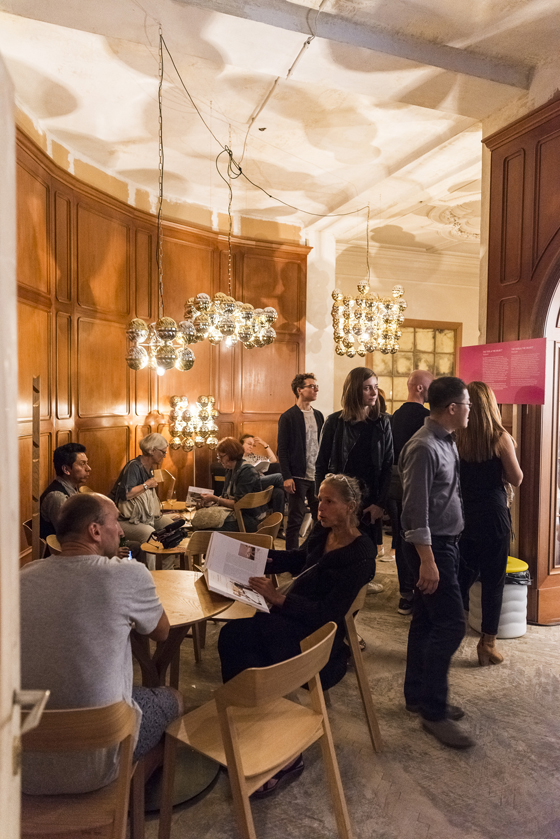
Cross-border relations: Czech manufacturer TON furnishes a café space at Vienna Design Week's Festivalzentrale; photo: Kollektiv Fischka
×But there was certainly nothing slow about the neon-light project that Dutch design pair rENs presented at the city workshop of Neon Kunze. In collaboration with the long-established, Vienna signage and lighting producers, the designers showed their fascinating experimentations with colour nuances and different light effects, close inspection by visitors allowing them to see the actual traces of gases racing around the various, specially designed glass tubes.
Highly illuminating stuff. Like Vienna Design Week itself.
© Architonic

